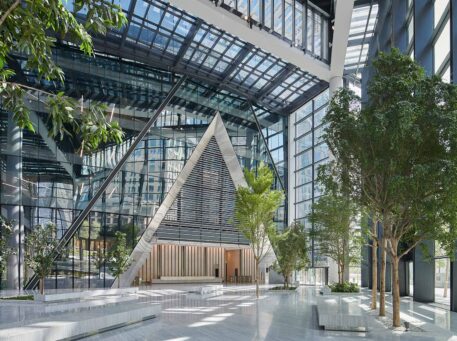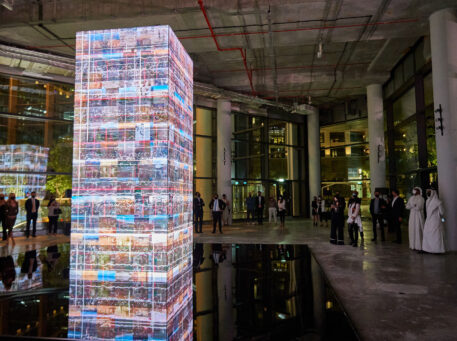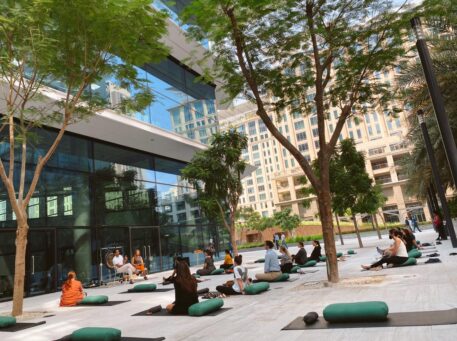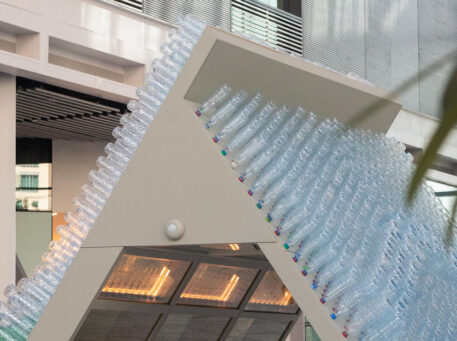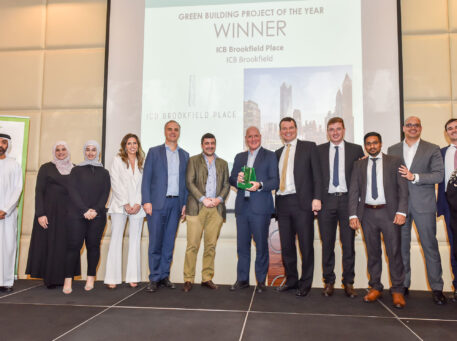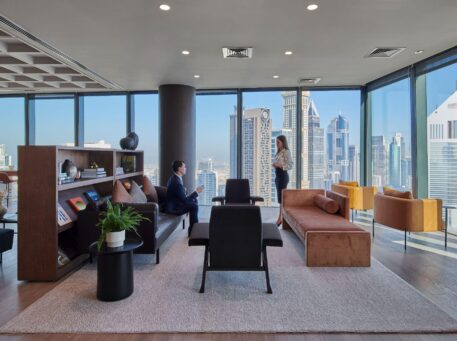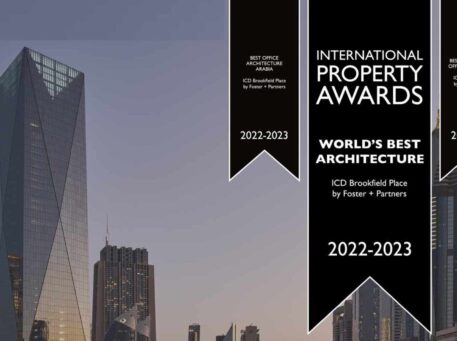STORIES
Breathe easy – air quality and the importance of office wellbeing
After months of anxiety and uncertainty, businesses around the world are plotting their return to the office. There are plenty of factors to consider, but in 2021 none are more important than employee wellbeing.
As should be expected following a global pandemic, there are increased employee concerns regarding health, safety and the hygiene standards of the office or building in which they’re expected to spend their working day. How often will public spaces be cleaned? Will hand sanitiser be readily available? Questions such as these are important ones, and employees deserve reassuring answers.
Why air quality matters
In Dubai, the subject of these questions extend to air quality. The city currently ranks 14th in the World Air Quality Index with a rating of 92, and the concentration of PM2.5 (particulate matter – or fine dust that travels through the air) is three times higher than the World Health Organisation exposure recommendation.
In a recent report on the future of the workplace, Antonio Lemos, Associate Director, Project Management, CBRE, said: “Studies have found that absenteeism, long-term health and worker productivity can be affected by elevated levels of pollutants such as fine particulate matter and carbon dioxide.” Businesses need to mitigate these associated risks if they want their employees to feel comfortable and safe upon their return to the workplace.
When it comes to air quality particularly, there are numerous considerations to take into account. Some might be familiar and others less so, but they are all of equal importance when it comes to ensuring employee safety and successfully creating the workplace of the future.

Particulate matter – PM10 and PM2.5
Particulate matter is the broader term to describe the myriad microscopic particles that travel throughout the air we breathe, and these are divided into several categories. PM10 includes the likes of dust, pollen and airborne mould, while PM2.5 is used for even finer materials such as combustion particles, organic compounds and more. Subtleties aside, when breathed in both PM10 and PM2.5 can travel through the respiratory tract and into the lungs, and excessive exposure can often lead to coughing, wheezing and general asthma-like irritation.
To combat these risks and reduce PM10 and PM2.5 exposure as much as possible, it’s vital to install a high-quality filtration system that adheres to recognised standards. If possible, taking measures to keep the air immediately outside your office as clean as possible – for example, by implementing a no smoking policy outside the building – can make a big difference to the air that’s inside.
Carbon dioxide
Fresh air is just as important in ensuring office comfort, and the most effective way to see if this is being achieved is by measuring carbon dioxide levels. Carbon dioxide levels are naturally higher in indoor spaces, and can increase significantly in large office spaces inhabited by lots of people. High CO2 levels can lead to headaches, dizziness, difficulty breathing and a general feeling of restlessness.
It’s much harder for us to notice variations in carbon dioxide levels or to know when they’re too high, which is why monitoring is particularly important. Once a monitoring system is in place, it’s much easier to know when more fresh air might be required – and how much is required based on the number of employees in the building.
Again, trying to control the external air quality around your office can have a big difference here. Things like smoking and car exhaust fumes are a significant contributor to carbon dioxide levels, and so trying to reduce these emissions where possible will bring big rewards elsewhere.
Carbon monoxide
Carbon monoxide is one of the more widely-known dangers when it comes to air quality and basic indoor safety. Just like we all do within our own homes, it’s of the utmost importance to monitor levels within our own offices and to receive swift alerts if they reach a dangerous level. Indoor spaces are particularly susceptible to carbon monoxide, and a particularly high concentration in the air can restrict the amount of oxygen that travels through the bloodstream and potentially interrupt our vital organs from functioning as they should.
To avoid any serious issues, carbon monoxide levels need to be monitored as frequently as possible. We’ve already mentioned car emissions and their impact on air quality, but they are a particularly significant contributor of carbon monoxide and should be minimised in the immediate vicinity of the office to keep levels as low as possible.
Temperature
Whether it’s in our homes or our offices, we all know the importance of maintaining an ideal temperature, and the negative impact of not doing so. If we’re too hot or cold, we find ourselves easily irritable, increasingly uncomfortable and unable to properly focus on the task at hand. In extreme cases, a change in temperature can be a serious hazard.
This is why it’s important to continuously monitor office temperatures, not just in one location but throughout the entire workplace – just because one floor is the ideal temperature doesn’t necessarily mean the rest of the building is too. Particular emphasis should be placed on areas with high footfall, including cafés, meeting rooms and other communal areas, to keep everyone comfortable.
Humidity
This is something anyone who’s experienced summer in Dubai will be familiar with. With humidity, the higher the moisture content of the air around us, the less our sweat evaporates and the harder our bodies have to work to effectively cool down. Not only does this lead to us feeling hot, sticky and extremely uncomfortable, but causes increased respiration and blood circulation.
As humidity is closely linked to temperature, it’s vital to measure it at all times and across the entire office. In any areas with higher-than-average humidity, air conditioning can be adjusted accordingly to maintain a more comfortable balance.
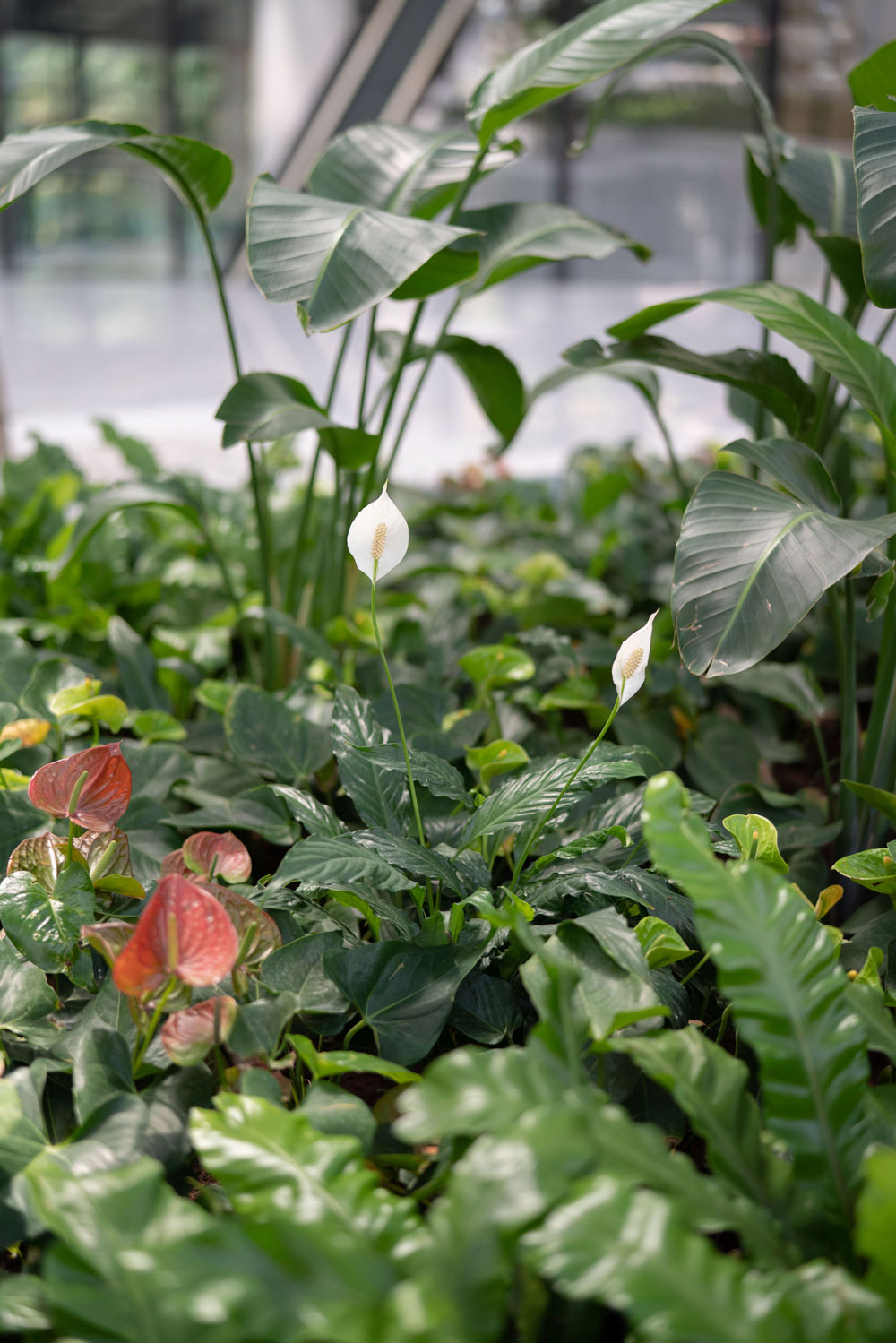
Leading the way in office wellbeing
It only takes a brief dive into the world of air quality to realise that there is so much more to consider than simply the quality of your air conditioning. There are plentiful hidden factors and unseen risks that must be tackled before employees can be welcomed back safely and properly.
Recognising the importance of this, we recently conducted our own Indoor Air Quality test at ICD Brookfield Place. After comparing our results to local and international indoor air standards – including outdoor standards such as the U.S National Ambient Air Quality Index – we were delighted to surpass even our own high standards. In addition to exceeding the standard requirements for the basic contents of the test - temperature, humidity, dust PM10, PM2.5, CO2 and CO – international standards were also exceeded; reassuring our tenants and visitors that the air that they breathe is clean.
The MERV13 filtration system installed in the building – which is considerably more effective at capturing any harmful particles than typical, commonly-used MERV8 filters – was found to be 70% more efficient over the industry-recognised limit when it came to filtering out both PM10 and PM2.5. Looking at PM2.5 specifically, our test found just 10ug/m3 compared to the acceptable standard of 35ug/m3.
We also recognised early in the project the risks of pathogens (bacterium, viruses and microorganisms) and produced a pathogen sterilisation strategy considering the following pathogens using Ultraviolet Germicidal Irradiation (UVGI):
*Coronavirus
*Influenza A virus
*Mycobacterium tuberculosis
*MRSA
This strategy differs from standard building UVGI policies, as the ICD Brookfield Place strategy concentrates on pathogens being supplied directly to the office and common areas, resulting in the highest levels of sterilisation. This resulted in mould and yeast readings being 97.7% lower than local/international acceptable limits. The highly encouraging results of these tests showed that the measures we’ve implemented have made a clear, positive impact on the health of the building.
In terms of temperature and humidity, we have dedicated, smart remote monitoring systems installed throughout the building, which allow us to see accurate, real-time measurements in various locations and make adjustments accordingly. In areas of particularly high footfall, such as cafés or communal meeting areas, we run more frequent tests to maintain the optimum environment.
We also have strict rules and procedures for our external space immediately outside the office – which, as we know, can directly lead to an increase in CO2 and carbon monoxide levels within the office itself. This includes a no smoking policy anywhere in the ICD Brookfield Place grounds, and strict control measures to monitor and maintain reasonable levels of vehicle activity (and thus fuel emissions) in the surrounding area. Thanks to all of this, the levels of carbon dioxide and carbon monoxide detected in our test were 98% and 99% over the acceptable standards respectively.
The days of putting up with substandard office spaces are long gone. As we emerge from the most serious public health crisis in over a century, it is imperative that businesses prioritise the safety of their workers over anything else and assuage any concerns they may have upon their return to the workplace. Employees nowadays expect (and, quite rightly, deserve) a working space that is not only conducive to collaboration and productivity, but also puts health, safety and hygiene first on the agenda.
At ICD Brookfield Place, that vision becomes reality. As the race for premium, wellbeing-focused office space heats up, we remain well ahead of the pack.





